If you think Dubai only dreams in gold and glass, the journey of the Burj Khalifa will make you believe the city rewrote what’s possible. Back in the early 2000s, standing where the Burj Khalifa now pierces the sky, you’d see nothing but sand, tire tracks, and a horizon begging for ambition. Today, people from all over the world crane their necks at the shimmering giant, snapping photos, gasping, or just staring in wordless awe. Ever ask yourself: how did this wild vision become Dubai’s defining icon? Buckle up—you’re about to find out.
Key Moments in the Burj Khalifa’s Epic Rise
Here are the essential highlights for anyone tracking the Burj Khalifa’s wild path from blueprint to sky-high celebrity:
- It started as a plot to turn Dubai into an international hotspot—think New York, but on adrenaline.
- The foundational dig began in January 2004. At one point, workers poured enough concrete to fill an Olympic swimming pool every three days.
- The final height: 828 meters (2,717 feet). That’s over twice as tall as the Empire State Building, making it the world’s tallest structure as of August 2025.
- Every week, nearly 12,000 workers from more than 100 countries raced the desert heat and the clock.
- It opened to the world on January 4, 2010, instantly changing the skyline and Dubai’s global rep forever.
Burj Khalifa Explained: Design, Vision, and Stakes
The birth of the Burj Khalifa was never about “just” breaking records. It all started with Dubai’s plan to shout louder on the global stage. The Emirate, known for fast cars and financial deals, wanted something that screamed ambition. Enter Emaar Properties, the developer with enough imagination to replace a thousand city planners. Together with Chicago-based firm Skidmore, Owings & Merrill (yes, the ones who did the Willis Tower), they whipped up blueprints for a building that almost seemed like science fiction.
The design isn’t just pretty geometry. The Y-shaped floor plan comes from a desert flower called hymenocallis, giving it elegance—but it’s really clever engineering to help the building stand tall against burling Gulf winds. Architect Adrian Smith wanted every floor, from swanky Armani apartments to observation decks, to have unbeatable views and stability, not just stickers for tourists. The structural system, a “buttressed core,” holds the record-breaking height without swaying like a palm tree in a sandstorm. And if you’re wondering why the top looks like a gigantic spire, it’s partly to grab more record titles, not just to look good on postcards.
The timeline? Relentless. The first foundation piles went in before social media was a thing. Over six years, teams laid 330,000 cubic meters of concrete (about 160,000 elephants’ worth!), built 163 floors, jammed in enough steel to stretch a quarter of the way around the world, then added a 200-meter-long spire just for extra sky-high drama. Fabricators in Dubai, South Korea, and beyond all contributed parts, reflecting just how global this project became.
The Perks and Pull of Burj Khalifa for Dubai and Everyone Else
Can you imagine visiting Dubai and ignoring the Burj Khalifa? It basically transformed the city’s reputation from a stopover hub to a bucket-list destination. Emaar’s plan worked—millions now make the trip every year just to snap selfies at the base or sip overpriced cappuccinos on the observation decks. Hotels in Downtown Dubai, where the Burj Khalifa towers over the Dubai Fountain and Dubai Mall, now book out months in advance.
Locals felt the change too. Suddenly, Dubai was getting tech companies, luxury brands, and celebrity chefs wanting a taste of the action. The “Burj effect” sent land values soaring, lured global HQs, and turned sleepy desert blocks into all-night hotspots. If you own an apartment within eyesight of the spire? Lucky you—property values love sky-hugging neighbors.
Tourists aren’t the only ones getting perks. Scholars study the building for its wild engineering triumphs. Students, engineers, and architecture buffs visit just to say, “I stood where the impossible happened.” There’s even a sunrise yoga class and a restaurant on the 122nd floor (At.mosphere) where the window seats make clouds look close enough to touch.
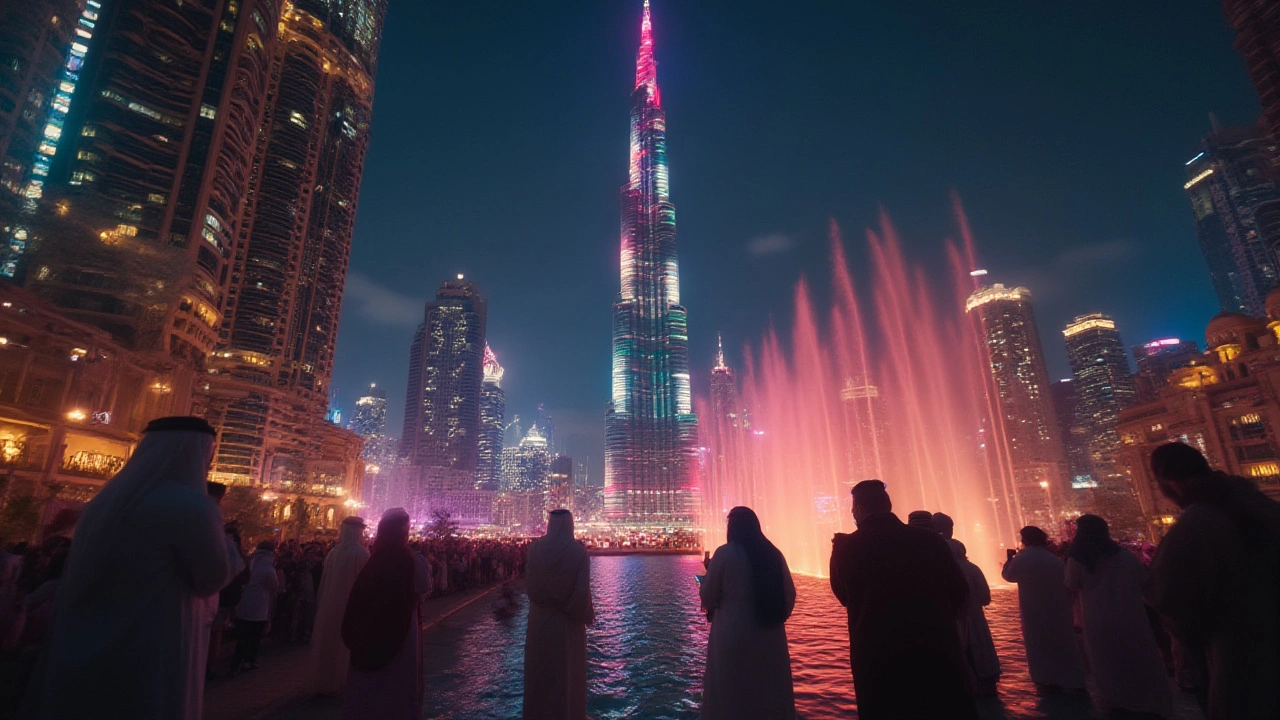
Types of Experiences at Burj Khalifa: From Thrills to Tranquility
Not all Burj Khalifa visits feel the same. Adrenaline junkies can launch up the world’s fastest double-deck elevators (10 meters per second—hold your hat!). For jaw-dropping views, “At the Top” on floors 124/125 gives you a dizzying 360° of the emirate, sea, and golden sand dunes melting into the horizon. Want to brag about the world’s highest lookout point? Grab a ticket for “At The Top Sky” on the 148th floor.
That’s not all. Foodies find their way to lounges on floor 152–154. Imagine sipping bubbles with your friends, skyscrapers twinkling below, while the entire city glows like a lantern. Families can catch the nightly fountain show from dedicated glass-walled corners. Night owls sometimes book VIP experiences to stargaze after the crowds vanish. Even locals escape for a moment of calm above the city buzz or snag sunset shots for their Instagram grid.
Want practical tips? Book tickets online ahead of time—walk-ins often wait hours. Prime time (late afternoon to catch both daytime and city lights) costs more but it’s worth it. Pair your visit with Dubai Mall so you can grab dinner or shop for souvenirs after your climb. Dress the part—the air above 800 meters can feel chilly, even in summer, so pack a light jacket if you’re going high. And, obviously, keep your camera charged—the window walls make perfect frames for viral snaps.
The Human Ingredient: Workers, Stories, and Ingenious Fixes
Behind all the headlines, the Burj Khalifa’s real story is a mosaic of people. More than 100 nationalities showed up daily, shoulder to shoulder, laying steel, fixing glass panels, and sweating through sticky Gulf summers. Some worked night shifts when daytime temps hit 50°C. They had to invent new construction methods on the fly; for example, concrete had to be poured at night and loaded with ice so it wouldn’t crack in the heat before it set. The cranes? Specially designed to reach over 600 meters and still stand their ground in fierce winds.
Ever heard of “jump lifts”? These are elevators built into the tower as it grows—kind of like an elevator mounting a ladder, going higher as workers climb. Without these, waiting for a ride up could stall the job for hours every day. The glass? Double-insulated, coated to repel the worst sun heat, yet stay crystal clear for views. Maintenance crews abseil down ropes every week just to clean thousands of windows—imagine that as your morning office routine.
Stories from the site are wild. One crane operator from Thailand became famous for never leaving his cab during a shift—his team sent up food and water via basket, and he only descended at the end of his week-long rotation. Engineers from the US, India, and Germany all swapped tricks, sometimes designing last-minute fixes while standing on unfinished floors, laptop in hand, troubleshooting in real time. The Burj Khalifa is a testament to what happens when ordinary people tackle an impossible job together, fueling a kind of camaraderie that only happens in the world’s toughest work zones.
The Aftermath: What Burj Khalifa Means for Dubai—And for Dreamers Everywhere
Now that the Burj Khalifa has had more than a decade to shape the city’s identity, it doesn’t just loom large on postcards. It’s practically the face of Dubai’s ambition. Tourists still blink in disbelief at the height, but locals see it as proof that with vision, even desert dreams can sprout steel and glass. New skyscrapers pop up around the city every year, yet none come close to shaking the spotlight from this record-breaker.
The building set off a global race for “the world’s tallest”—but it did something bigger, too. It inspired developers from Shanghai to Jeddah to think bolder and reach higher. In Dubai, the Burj Khalifa still draws crowds day and night; families picnic in its shadow, couples snap proposal pics out front, and city workers sneak up to the lounge for birthday treats.
If you ever feel a pinch of self-doubt or wonder if big ideas can really crack through, just look up. The Burj Khalifa proves that patience, teamwork, sweat, and a few cigar-chomping architects can change not just a city skyline, but the whole story a place tells about itself. Ready to see Dubai from the top? Don’t just take my word for it—go see what happens when vision and grit defy gravity.

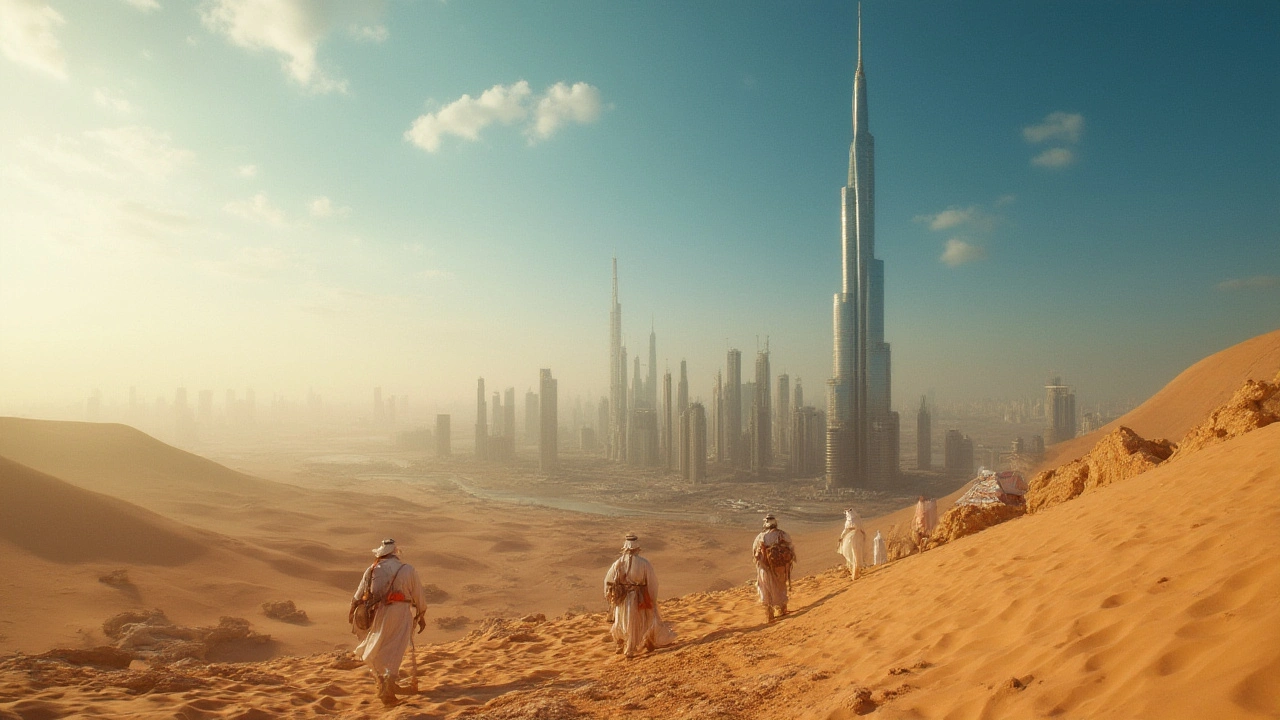
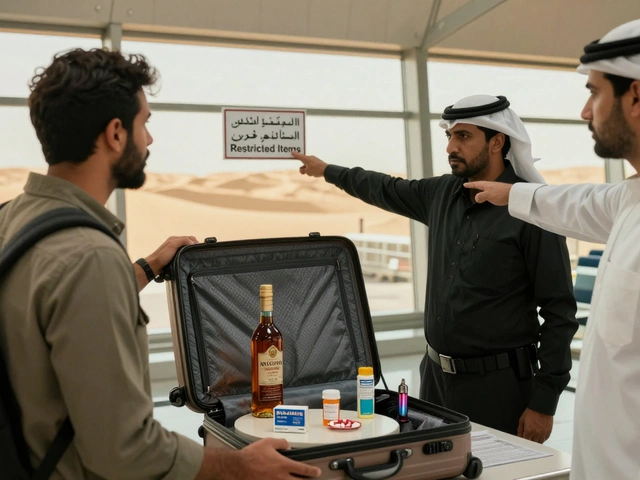
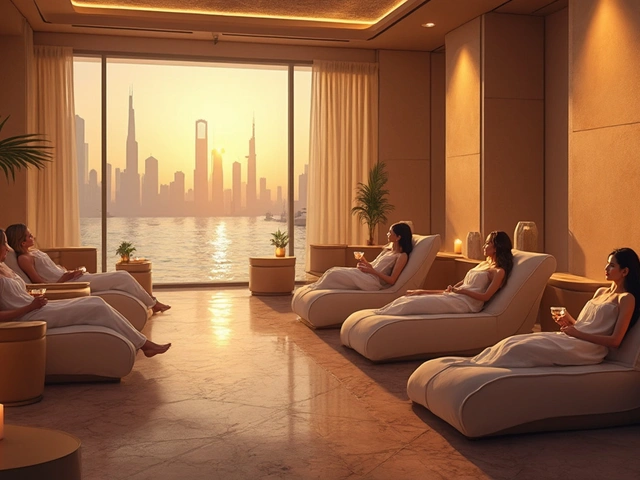
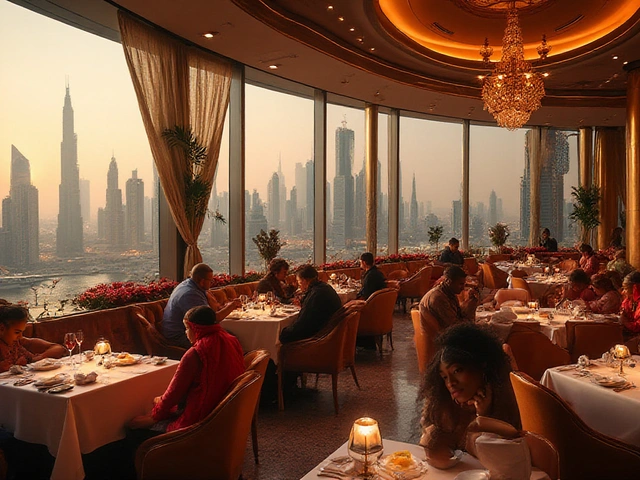

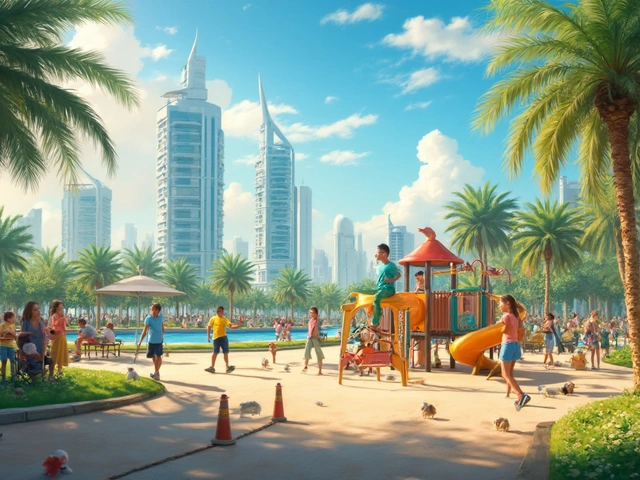
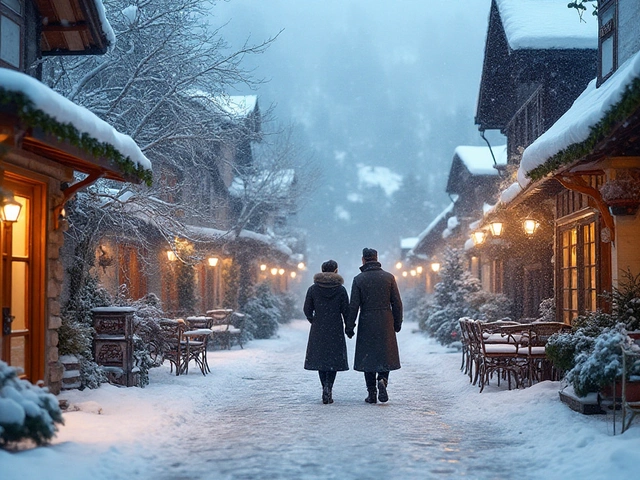
John Dickens
August 1, 2025 AT 15:33Man, the sheer scale of the Burj Khalifa is absolutely mind-blowing. It’s not just a building; it’s a marvel of modern engineering and design. I’ve spent some time looking at the structural innovations they used, particularly how the Y-shaped floor plan enhances stability against the wind loads common in Dubai’s desert environment.
It’s incredible how they managed the logistics too—coordinating thousands of workers and millions of pounds of materials under intense heat takes some serious planning. This story really highlights the synergy of architecture, engineering, and sheer determination.
Honestly, it also raises interesting questions about urban development and how architecture continues to push the limits of what's possible while shaping cultural identity. It’s like the Burj Khalifa doesn’t just scrape the sky; it redefines what a city landmark can symbolize globally.
I’d love to hear more about the human stories behind its construction. You know, the unsung heroes like the workers and engineers who made it happen.
Colleen McGhan-Cox
August 1, 2025 AT 22:47OMG!!! 🌟 This story about the Burj Khalifa is just electrifying!! Can you imagine the MASSIVE collaborative effort, the tech geniuses, the logistics monster tackled?! It’s like a living metaphor for what dedication and vision can achieve!!!
Every single detail, from initial blueprint to standing tall into the sky, must have involved tons of complex, interrelated challenges demanding relentless precision and care. Like, the cranes, materials, workforce, safety protocols, time management—non-stop!!!
And seriously, this kind of monumental achievement fuels my soul with optimism—proof that no matter the scale of a dream, united hustle can transform raw sand into the tallest spire on earth! I wish we spotlighted these stories more often because they totally redefine human potential!!!!!
Can anyone else feel that rush of motivation to push their own limits after seeing what was done here?!!!
Kelvin Lee
August 2, 2025 AT 04:35While I do appreciate the architectural and engineering feat behind the Burj Khalifa, I can’t help but question the priorities that go into such megastructures. Isn’t it a bit excessive to push for the tallest building at the expense of more grounded urban issues?
We need to think critically about the sustainability and the social context of such projects. High-rise buildings often emphasize status and spectacle, overshadowing basic human necessities that urban planners should address first.
This narrative often glorifies scale and luxury but gives less attention to the environmental and social impact. We should celebrate innovation but also advocate for responsible and equitable urban development, don’t you think?
What are your thoughts on this balance?
Chris Bitler
August 2, 2025 AT 08:17Good points raised here. The Burj Khalifa is a crazy example of human innovation, no doubt. But relying purely on height and grandeur as symbols of progress might overshadow more sustainable approaches to city planning.
Still, I think it’s important to acknowledge the technological achievements that made this possible. The construction methods have inspired advances in safety and materials engineering.
Maybe the story about the Burj Khalifa should be taken as both an inspiration and a lesson. Inspiring in the sense of pushing technical limits, and a lesson in considering the broader impacts of our ambitions.
Gerardo Pineda
August 2, 2025 AT 15:27Hey, I just wanted to add a little on the workforce behind Burj Khalifa. The site employed thousands of workers from across the globe, which is an impressive cultural melting pot in itself. 😊
But it’s also important to note the challenges many of them faced in terms of labor conditions, housing, and fair pay.
While the building symbolizes modern achievement, let's remember the human element — every bolt and beam has personal stories attached to it. Support and empathy for the people behind the glamour is just as crucial.
Overall, the Burj Khalifa is a triumph, but with an awareness of the human story engraved in its towering walls, we can truly appreciate its significance. Keep sharing facts like these, they add so much depth! 😊
Aditya Sinha
August 2, 2025 AT 20:40Hey, just adding some extra info from what I know. The Burj Khalifa construction used some very innovative concrete technology, the type that could set in the desert heat without cracking. They had to pump concrete to record heights, which was no small feat!!
Also, the design included special UV-reflective glass to tackle the intense sunlight and reduce cooling loads.
Honestly, it really was a giant puzzle put together by army of experts.
But man, the scale of Dubai's ambition is hard to match, and that’s what makes this project so crazy cool.
Sana Siddiqi
August 26, 2025 AT 04:43Oh, the Burj Khalifa is like the ultimate giant flex, isn’t it? 😅 Dubai showing us all how to slap some sand and turn it into the world’s tallest glass candy cane. Honestly, it’s both awe-inspiring and a bit of a ‘why though?’ moment.
But you gotta admit, the engineering behind it is coolest thing since sliced bread. It’s shiny, grand, and screams: ‘Look at me! I’m the top dog of skyscrapers!’
And regardless of what you think of its social or environmental impact, you gotta respect the sheer audacity. Dreams that massive don’t come cheap or easy.
Bethany Wappler
August 26, 2025 AT 16:53I really appreciate how this post highlights the fascinating journey from concept to reality. It’s more than just a construction story; it’s about vision, perseverance, and craftsmanship. Despite some flaws and criticisms, the Burj Khalifa ushers a new era in architectural innovation.
People often forget how much creative problem-solving went into overcoming technical constraints, labor challenges, and environmental factors. It’s inspiring but also makes you think about how large projects can be better balanced with social responsibilities.
In the end, stories like this can motivate us to push the boundaries, but also to ensure that progress is inclusive and conscientious.
Ronnie Ryan
August 27, 2025 AT 15:06It is beyond absurd to glorify a structure that epitomizes excess without critically considering the colossal socio-economic repercussions of such ventures. What is a landmark if it exacerbates social disparity? The ostentatious display of architectural grandeur cannot be divorced from interrogations about equity and sustainability.
This obsession with vertical supremacy is a glaring symptom of misplaced values prioritizing spectacle over substance. The article pays scant attention to these vital concerns, indulging instead in a glorified narrative that neglects the less glamorous realities.
By all means, applaud the engineering prowess; yet, let us not become complicit in overlooking the ethical implications.
Vinayak Agrawal
August 31, 2025 AT 02:26Absolutely fascinating, the Burj Khalifa is a peak achievement of engineering – no doubt about it! 😀 The way the team conquered challenges like extreme heat and wind is truly inspiring.
It’s amazing too how this building has become a symbol not just for Dubai, but for human ingenuity worldwide. It shows what you can do when you combine vision with technical skill and teamwork.
Of course, it’s super important to keep improving on sustainability, but projects like this push the boundaries that naturally lead to breakthroughs we can all benefit from.
Excited to see what the future holds for architecture and urban design! 🚀